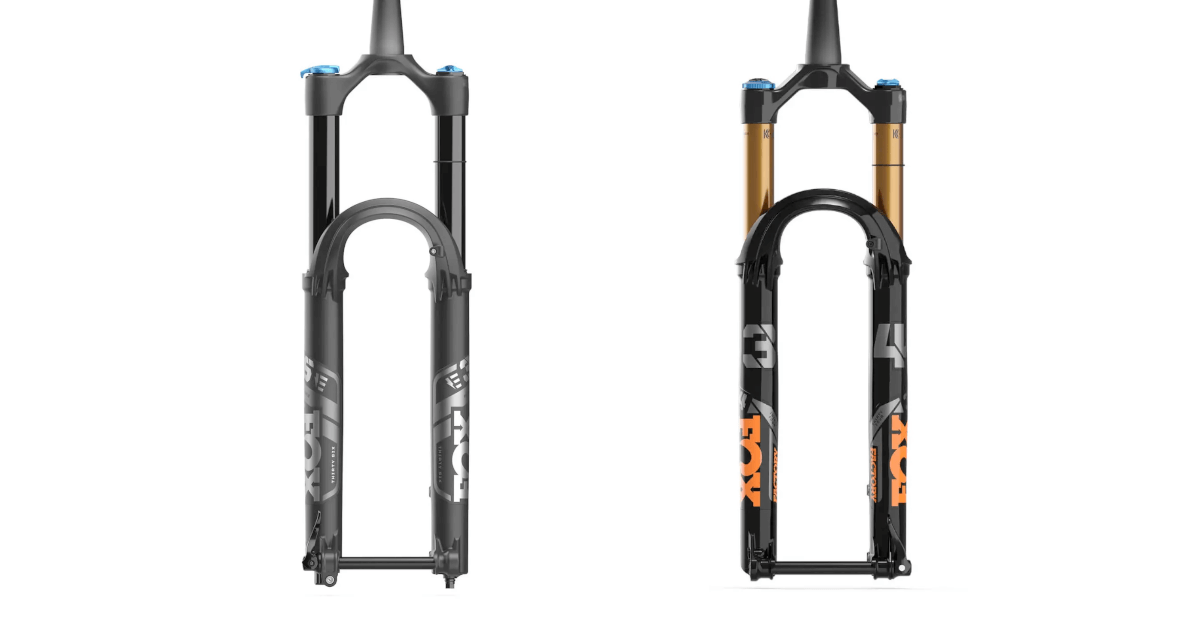Steering tube standard
The first thing to check is that the steering tube standard matches.
The steering tube is the part of the frame that connects the head tube to the suspension fork. It is also called a steering column or fork column.
Steering tube standards must take two things into consideration: thickness and shape.
If the two steering tube standards do not match perfectly in the head tube and suspension steering tube, they will not mesh and cannot be mounted on the frame.
In other words, if you buy a suspension fork with a different standard, it is game over.
Therefore, you should definitely check the steering tube standard on the spec sheet of your bike. If you don’t see it on the spec sheet, contact the MTB manufacturer to find out the specific standard.
If you do not get a response from the manufacturer, you can also look for the suspension fork specs on the website of the manufacturer of the suspension fork currently installed.
Steering Tube Thickness Standards
The three major steering tube thicknesses for current MTB forks are as follows
- 1 1/8 inch
- 1.5 inch
- 1 1/2 inches
If these thicknesses do not match, the bearings that come with the frame that attach to the head tube will not be able to be installed, making it impossible to ride.
The steering tube is also the mounting standard for the stem, so if it changes, the stem will also need to be replaced.
Steering tube shape standards
In addition to the thickness of the steering tube, the shape of the tube is also very important.
There are two types of steering tube shapes
- straight “straight type
- tapered, which is thicker at the bottom and thinner at the top
Today, the tapered type is the most common.
In the case of tapered, the pattern is often 1.5” thick at the bottom of the top tube and 1 1/8" at the top of the top tube, but note that this varies from product to product.
Wheel Standard
Once the steering tube standards are compatible, the suspension to be replaced can be mounted on the frame, so the next important thing to check is the wheel standard.
The following three points are important for wheel compatibility. 1.
- end width
- shaft end system
- tire size
Suspension forks and wheels that do not match these three points cannot be mounted (except for smaller tire sizes)
End Standards
The “end standard” is also the standard for MTB wheels.
Specifically, the following three must match perfectly
- shaft thickness
- shaft length
- shaft mounting method
If even one of these is different, the wheel will not be able to be mounted.
Most suspension forks for MTB sold today are “boost standard” 15 x 110mm thru-axle type, so if you are replacing a non-boost standard suspension fork, you will not be able to use your current wheels.
For more information on MTB end standards, please read the following article.
Tire size
This is relatively easy since you can choose the same size as the one already on the body.
There is an option to “choose a different size” such as installing a 29er suspension fork on a smaller frame (e.g. 27.5), but it is risky because the fork length is different, resulting in an extremely upright style.
On the other hand, if the frame and suspension fork are designed for a larger size frame such as a 29er, it is a common customization to change the wheels to 27.5 (650B) to upgrade the bike to a smaller size.
Brake Standards
The last thing to check is brake specifications. If brakes cannot be installed, the MTB will not be able to “stop when it goes forward”.
There are two main types of brake standards for MTBs
- disc brakes
- V-brake
Most MTBs today have disc brakes. As long as the corresponding brake type is the same, it is basically possible to install brakes.
However, there is also a standard for the mounting method (mounting standard) of bicycle disc brakes.
If the mounting standard changes, you will need to buy a new brake or mount adapter.
Bicycle Disc Brake Mounts: Recognition and Adapter Selection
Mounting adapters for bicycle disc brakes are essential when changing calipers with different standards or rotor sizes. This section explains the types of mount adapters, how to recognize them, and the model numbers of Shimano's mount adapters.
